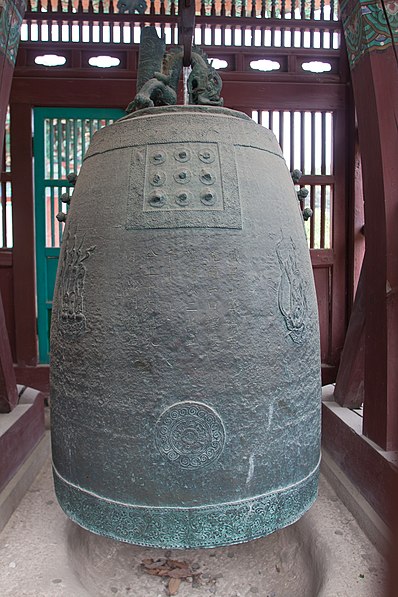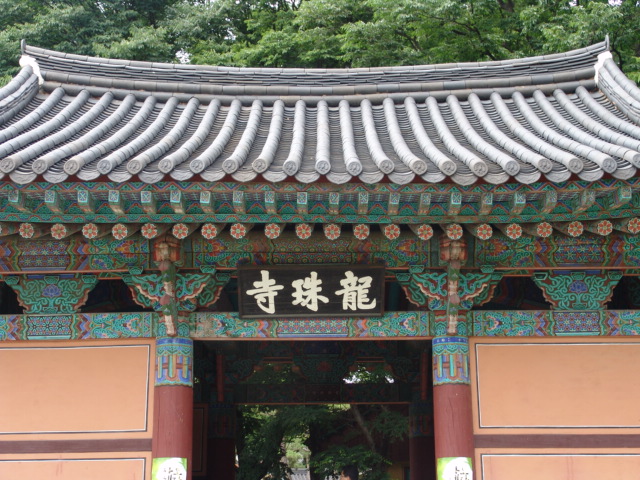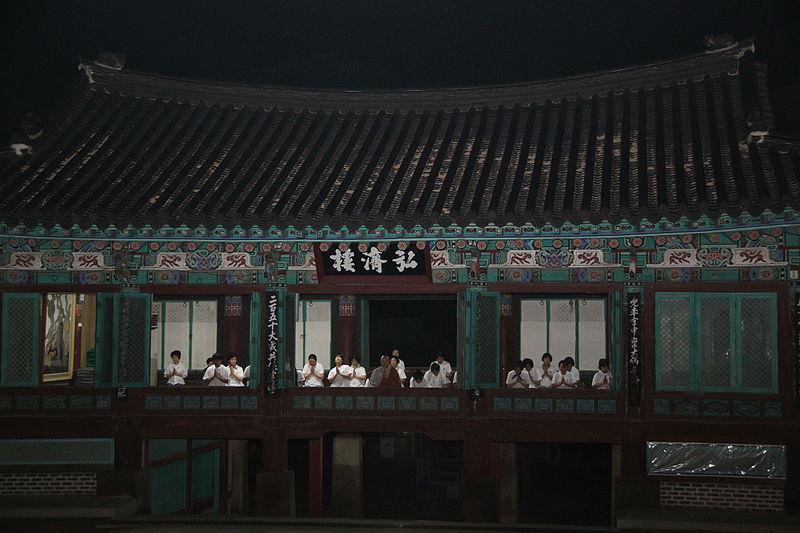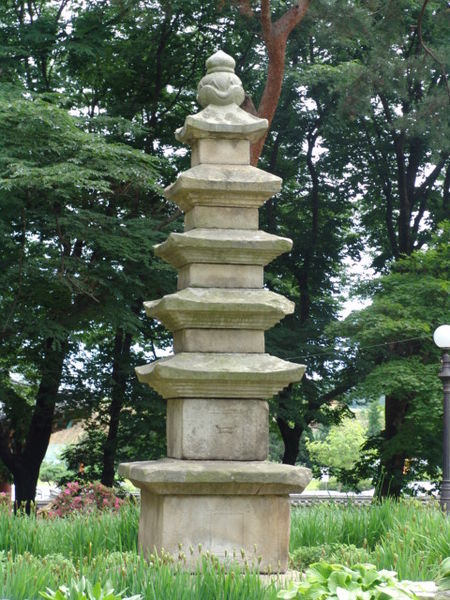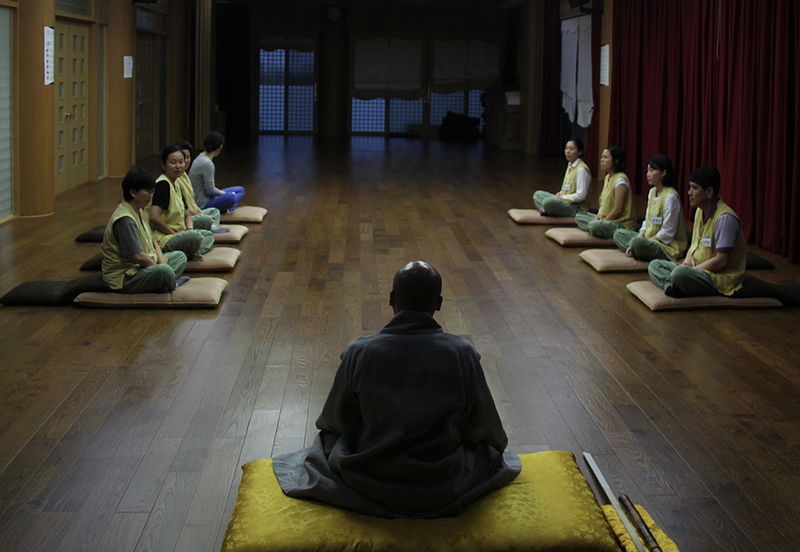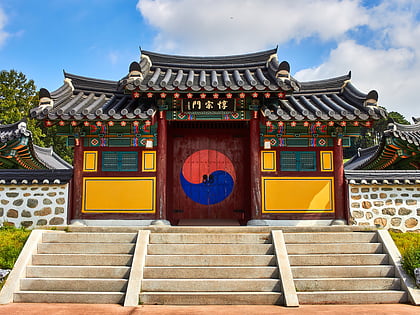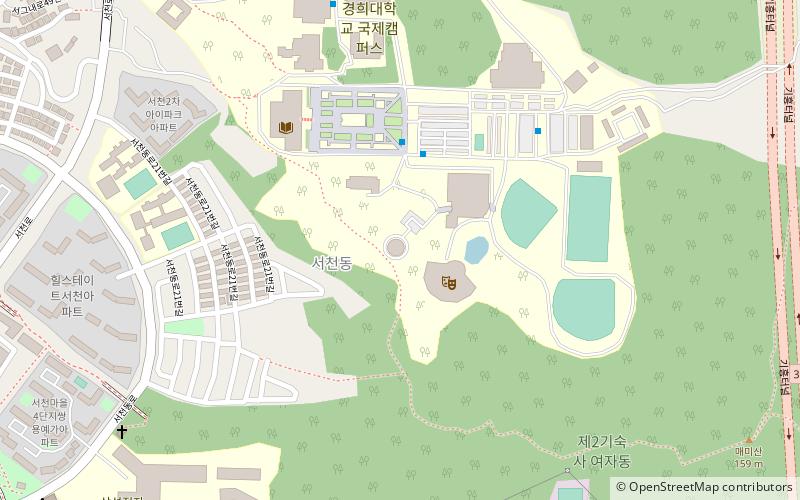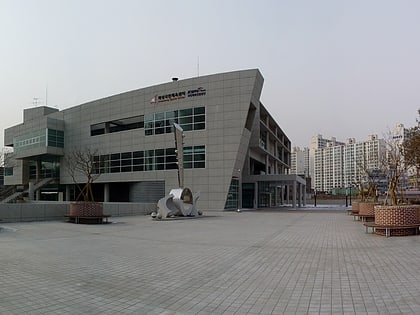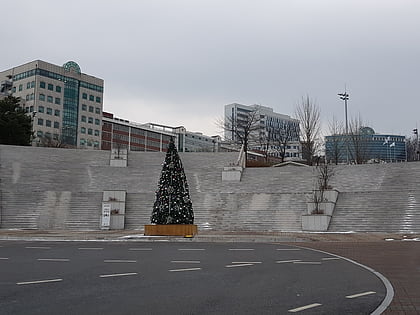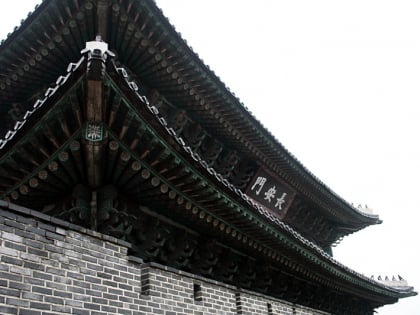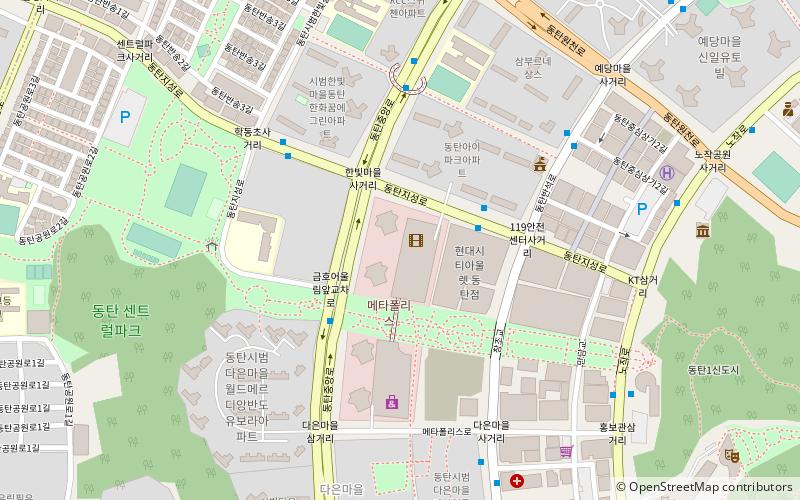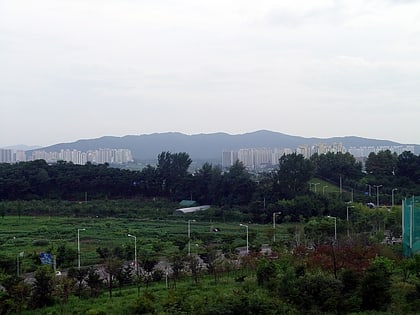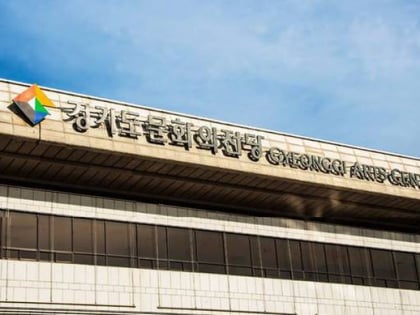Yongjusa, Hwaseong
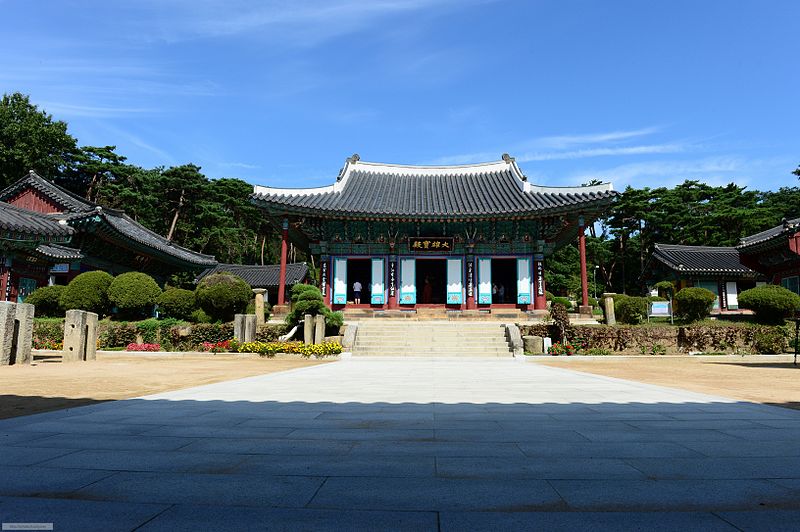
Facts and practical information
Nestled in the serene city of Hwaseong, within the Gyeonggi province of South Korea, lies the tranquil Yongjusa Temple. This historic Buddhist temple offers a peaceful retreat from the hustle and bustle of modern life and is a site of profound cultural and spiritual significance.
Established in 854, Yongjusa has a poignant history. It was reconstructed in 1790 by King Jeongjo of the Joseon Dynasty to honor and house the remains of his father, Prince Sado, who met a tragic fate. The temple serves as a symbol of filial piety, a virtue deeply revered in Korean culture.
Visitors to Yongjusa can expect to be greeted by the Four Heavenly Kings as they pass through the One Pillar Gate, a unique architectural feature of the temple. The main hall, Daeungjeon, is a majestic structure holding the temple's primary Buddha statue and is an exemplar of traditional Korean Buddhist architecture.
The temple grounds are also home to several notable artifacts, including a bell designated as National Treasure No. 120, known for its exquisite sound and historical value. The temple's tranquil gardens, filled with ancient trees and colorful blooms, offer a space for contemplation and relaxation.
Yongjusa is not only a place for spiritual reflection but also a venue for cultural education. It provides temple stay programs where visitors can experience the daily life of monks, engage in meditation sessions, and learn about Korean Buddhism.
Yongjusa – popular in the area (distance from the attraction)
Nearby attractions include: Hwaseong Fortress, Suwon World Cup Stadium, Yunggeolleung, Kyung Hee Astronomical Observatory.


